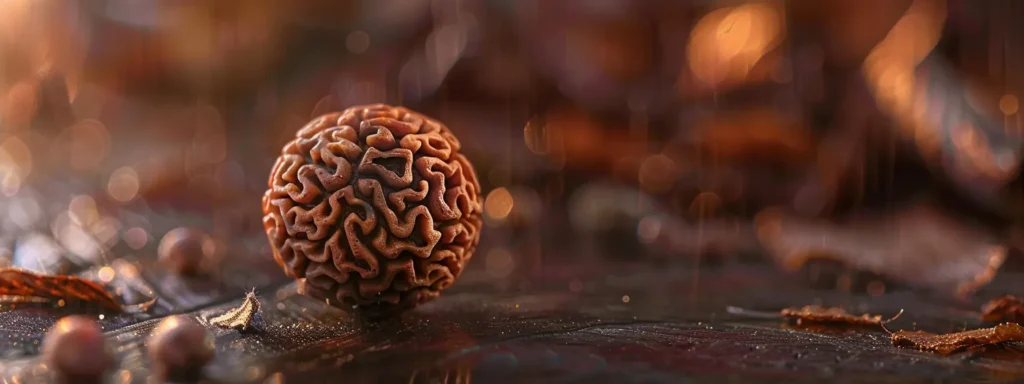Rudraksha Therapy
Unraveling the Cultural Significance of Rudraksha in Hinduism
Table Of Contents:
- Key Takeaways
- Discovering the Mythological Roots of Rudraksha
- Interpreting the Symbolism of Rudraksha Beads
- Examining Varieties and Cultural Roles of Rudraksha
- Understanding the Practice of Wearing Rudraksha
- Rudraksha’s Place in Modern Hindu Society
- Extending Cultural Significance Beyond Religion
The significance of Rudraksha beads in Hinduism extends far beyond mere decoration. These sacred seeds play a vital role in Hindu mythology and are often associated with meditation and concentration practices. This article will explore the mythological roots of Rudraksha, its rich symbolism, and the various types and roles these beads serve in cultural practices. Readers will gain insights into how wearing Rudraksha can enhance their personal spirituality and daily lives, addressing any confusion about its importance in modern Hindu society and beyond.
Key Takeaways
- Rudraksha symbolizes healing and transformation linked to Lord Shiva and other deities
- Wearing Rudraksha enhances meditation, focus, and emotional balance for spiritual practitioners
- Different Mukhi Rudraksha beads offer specific benefits related to individual deities and virtues
- Cultural practices surrounding Rudraksha vary regionally, reflecting diverse traditions within Hinduism
- Ethical sourcing of Rudraksha supports environmental sustainability and preserves its cultural significance
Discovering the Mythological Roots of Rudraksha

The mythological roots of Rudraksha are rich with legends from Hindu scriptures, highlighting its profound significance in spiritual and cultural practices. This exploration involves examining Rudraksha‘s presence in ancient texts, revealing how it has been a symbol of knowledge, healing, and beauty throughout history. Moreover, understanding Shiva’s connection to Rudraksha provides insights into its relevance for mental health and spiritual pilgrimage, emphasizing its enduring place in Hindu tradition.
Revealing Legends From Hindu Scriptures
The legends surrounding Rudraksha in Hindu scriptures highlight its divine origins and spiritual significance. One key legend tells of how Lord Shiva shed tears that transformed into the Rudraksha seeds, symbolizing both the blessing of healing and the element of peace. This connection to Shiva emphasizes the seed‘s role as a powerful tool in meditation and spiritual practice, making it revered among practitioners of Ayurveda and other holistic healing methods.
Another significant aspect comes from tales of Vishnu, who is also linked with Rudraksha. He is said to have worn a necklace of Rudraksha while engaging in Vanaprastha, the stage of renunciation. This practice underlines the seeds’ role in achieving spiritual growth and mental clarity, serving as a vital element in the pursuit of a balanced life. Through these stories, devotees learn that wearing Rudraksha can cultivate inner strength and focus, addressing their spiritual and mental needs effectively.
Furthermore, Dhanteras is celebrated in connection with wealth and health, where devotees often wear jewelry made of Rudraksha. This celebration reflects the belief that Rudraksha brings fortune and blessings, reinforcing its cultural importance. As a result, Rudraksha necklaces are sought after not only for their beauty but also for their significance as spiritual artifacts that offer blessings and improve overall well-being.
Exploring Rudraksha in Ancient Texts
Rudraksha is prominently mentioned in ancient texts, where its seeds are revered as sacred objects that promote peace and well-being. In Vedic scriptures, Rudraksha is often associated with Lord Shiva, highlighting its importance in worship in Hinduism. These texts describe how the seeds can transform negative energies into positive vibrations, facilitating a peaceful state of mind during meditation and prayer.
Furthermore, the association of Rudraksha with Goddess Lakshmi, the goddess of prosperity, is reflected in ancient writings that discuss prosperity gained through the worship of these seeds. The texts emphasize the belief that wearing or having Rudraksha in one’s possession attracts abundance and wealth, offering devotees a deeper connection to spiritual and material blessings. This connection reinforces its role as a vital element in spiritual practices aimed at achieving success in life.
Insights from ancient sages reveal how sadhu, or spiritual practitioners, utilized Rudraksha in their daily rituals to enhance their spiritual discipline. Their practices included counting mantras using Rudraksha malas, which helped foster concentration and mental clarity. Such historical examples underscore the significance of Rudraksha not only as a seed but also as a tool for attaining higher states of consciousness and inner peace in the journey towards enlightenment.
Understanding Shiva’s Connection to Rudraksha
Shiva’s connection to Rudraksha is deeply rooted in the core principles of bhakti, or devotion, which serves as a pathway for spiritual seekers. It is believed that the vibrations produced by Rudraksha seeds align with the anahata, the heart chakra, facilitating a direct link between the practitioner’s soul and the divine energy of Shiva. This alignment enhances the meditative experience, allowing practitioners to cultivate a profound sense of peace and devotion during their spiritual practices.
Many devotees choose to immerse themselves in the Ganges, where the sacred waters amplify their rituals involving Rudraksha. This sacred geography is believed to have been blessed by Shiva himself, making the combination of Rudraksha and the Ganges a powerful conduit for purification and spiritual growth. As practitioners chant mantras while wearing or holding Rudraksha, they often feel a heightened connection to their inner selves and the divine, fostering a transformative experience.
The spiritual significance of Rudraksha extends to its association with Brahma, the creator deity. This sacred connection underscores the belief that Rudraksha can aid individuals in their quest for knowledge and enlightenment. By integrating Rudraksha into daily rituals, spiritual practitioners are guided towards achieving inner balance, promoting tranquility, and unlocking higher states of consciousness that contribute to their overall well-being and spiritual advancement.
The stories of Rudraksha are deep and ancient, but their true power lies in their meaning. Next, the symbolism of these beads reveals layers of insight that speak to the heart.
Interpreting the Symbolism of Rudraksha Beads
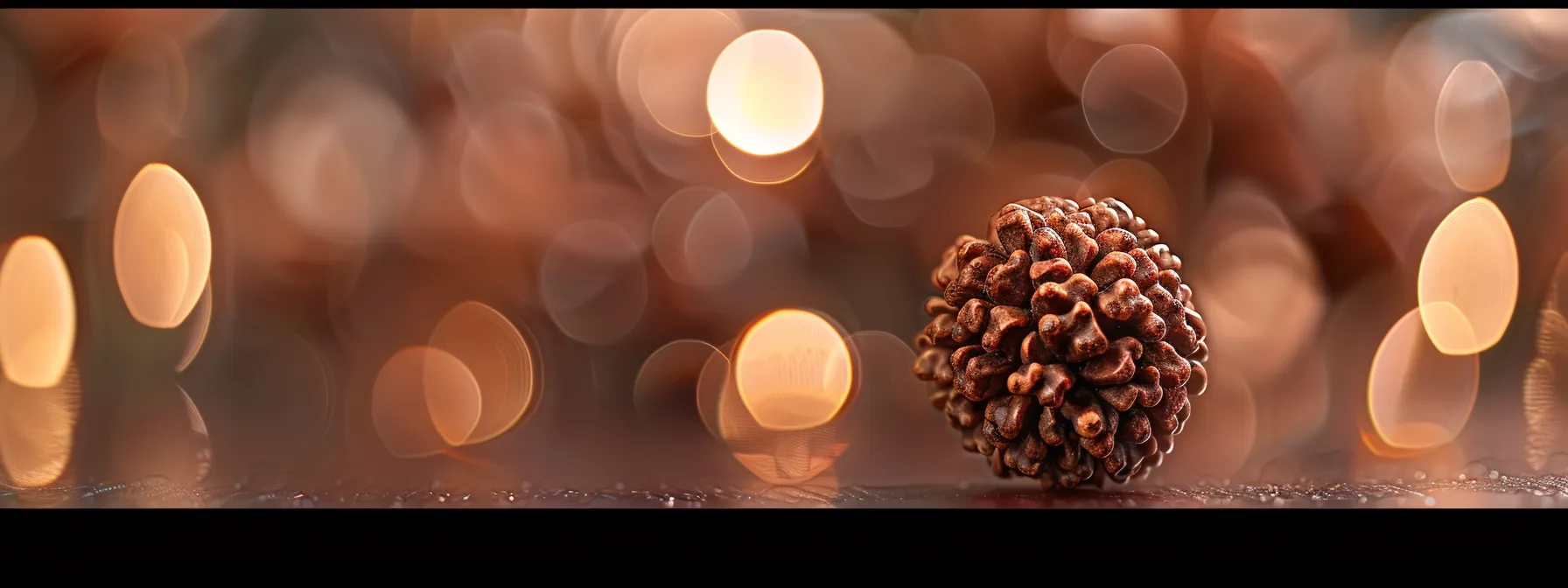
Rudraksha beads hold deep spiritual meaning in Hindu culture, serving as symbols of divine energy and dharma. By decoding their significance through the lens of ancient Vedas, practitioners, and pilgrims alike recognize Rudraksha as a manifestation of higher consciousness. This section will explore its role in rituals and ceremonies, as well as insights from spiritual leaders like Sivaya Subramuniyaswami and the guidance of a guru in understanding their importance.
Decoding Spiritual Meanings in Hindu Culture
Rudraksha beads hold profound spiritual meanings within Hindu culture, particularly regarding the mind and meditation. Their connection to Lord Shiva, as described in the Shiva Purana, signifies the bead‘s powerful role in enhancing focus and tranquility during spiritual practices. Practitioners often find that using Rudraksha in their rituals fosters a deeper connection with their inner selves, allowing them to navigate life’s challenges with enhanced clarity.
The association of Rudraksha with the goddess is another critical aspect of its symbolism. In the Shaiva Siddhanta tradition, Rudraksha’s wood represents the physical manifestation of divine energy, believed to attract blessings and prosperity. Wearing these beads or using them in meditation practices can help individuals align their thoughts and intentions with the cosmic flow, thereby promoting both mental and spiritual well-being.
For devotees, understanding the significance of Rudraksha goes beyond mere aesthetic appeal. The beads are not just accessories; they are tangible tools for spiritual growth. By integrating Rudraksha into daily practices, individuals can cultivate a stronger sense of peace and harmony in their lives, facilitating a balance between the mind and spirit. This integration promotes a holistic approach to personal development and spiritual advancement, addressing both mental and emotional needs.
Recognizing Rudraksha as a Manifestation of Divine Energy
Rudraksha beads serve as powerful symbols of divine energy in Hinduism, particularly during worship and ceremony. The seeds are often used in meditation and rituals, believed to channel shakti, or spiritual power. This connection allows devotees to enhance their spiritual practices, promoting mental clarity and emotional balance.
The cultivation of Rudraksha is deeply rooted in the soil of dedication and faith. As practitioners engage in soulful worship using these beads, they tap into their potential to attract wealth and prosperity, both materially and spiritually. This aspect of Rudraksha underscores its role as a tool for enhancing one’s quality of life, encouraging a balanced approach to personal and spiritual growth.
Furthermore, the use of Rudraksha beads in ceremonial practices reflects their importance in connecting individuals to the divine. When worn or held, these beads are thought to facilitate a deeper understanding of one’s purpose, aligning intentions with the cosmic energy surrounding them. This spiritual alignment fosters a harmonious environment, increasing the effectiveness of rituals, and enriching the overall experience for practitioners and devotees alike.
Role of Rudraksha in Rituals and Ceremonies
Rudraksha beads play a significant role in Hindu rituals and ceremonies, enhancing the spiritual experience for practitioners. Yogis often use these beads during prayer to deepen their meditation practices, as the physical presence of Rudraksha helps cultivate focus and promotes a tranquil mind. The beads serve as powerful tools, enabling individuals to connect with their inner selves and the divine energy that permeates rituals.
The use of Rudraksha in ceremonies reflects its integration into the broader philosophy of Hinduism. By incorporating these sacred seeds in various rituals, practitioners honor the blessings associated with Lord Shiva while embracing deeper spiritual teachings rooted in Sanskrit scriptures. This connection to ancient wisdom enriches the ritual experience and allows devotees to explore their spiritual journey with greater intention.
Moreover, Rudraksha beads facilitate a sense of community among practitioners during group prayers and festivities. The collective use of these beads fosters unity, allowing individuals to share their experiences and insights drawn from the traditions of both Hinduism and Buddhism. This practice reinforces their shared values and encourages personal growth in a supportive environment:
- Rudraksha enhances meditation without distraction.
- It connects users to ancient spiritual philosophies.
- Facilitates community engagement during rituals.
Rudraksha beads are not just symbols; they hold deep meanings shaped by culture and belief. Next, examining their varieties and the roles they play in different societies reveals even more about their power and significance.
Examining Varieties and Cultural Roles of Rudraksha
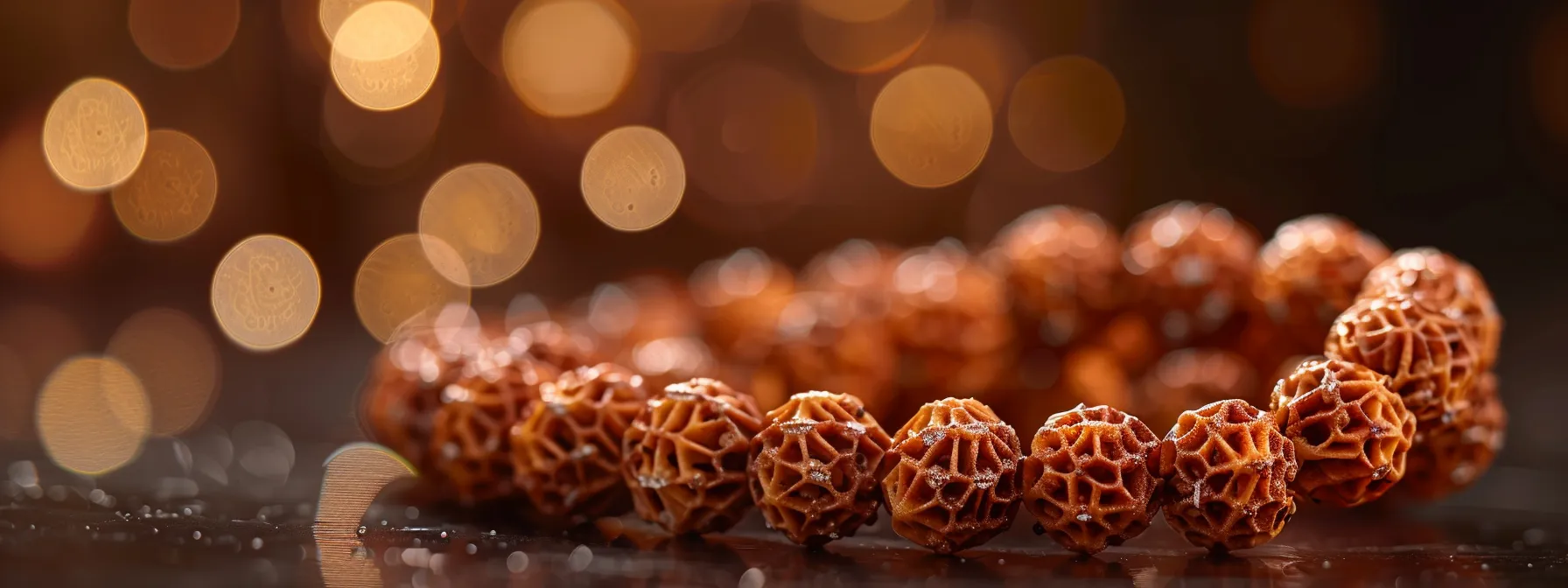
The examination of Rudraksha includes the significance of different Mukhi beads, each carrying unique spiritual beliefs and roles in Hindu faith. Regional traditions showcase varied practices in the usage of Rudraksha, from religious ceremonies to personal meditation. Furthermore, the incorporation of Rudraksha in Ayurveda and healing practices highlights its importance in holistic well-being, underscoring its relevance in spiritual practice and daily life.
Significance of Different Mukhi Rudraksha
Different Mukhi Rudraksha beads hold unique significance and are associated with various deities within Hinduism. Each type is believed to enhance specific qualities and virtues when used in meditation or prayer. For instance, the five Mukhi Rudraksha is linked to Lord Shiva and is often used in conjunction with specific mantras to promote peace and balance, making it a popular choice among practitioners who seek tranquility in their lives.
The importance of Mukhi Rudraksha extends to the symbolism of prosperity and wellbeing. The four Mukhi Rudraksha, associated with the goddess Saraswati, invokes wisdom and knowledge, making it an ideal choice for students and professionals striving for success. Users often chant relevant mantras while wearing or holding these beads to enhance their connection to the deity, thereby fostering prosperity and personal growth.
Furthermore, the cultural roles of Rudraksha vary significantly across regions, influencing how practitioners incorporate them into their spiritual practices. In some traditions, devotees combine the Mukhi Rudraksha with cotton thread to create malas for meditation and chanting sessions. This practice not only amplifies the spiritual vibrations but also serves as a tactile reminder of their intentions, leading to a more focused and fulfilling spiritual experience.
Regional Traditions in Rudraksha Usage
Regional traditions surrounding the use of Rudraksha among Hindus vary significantly across India, reflecting diverse cultural practices within the religion. In some areas, particularly in the northern states, practitioners often wear Rudraksha as a traditional necklace during festivals to attract positive energy and blessings. The rituals often include reciting verses from the Padma Purana, reinforcing the belief that wearing these beads enhances spiritual well-being.
In southern India, the Rudrakshajabala Upanishad plays a crucial role in demonstrating the significance of Rudraksha in spiritual practices. Devotees integrate these beads into their daily prayers and meditation, believing that they help channel divine energy and foster emotional balance. This tradition serves as a practical method to connect with one’s spiritual path, offering transformative experiences grounded in ancient teachings.
Cultural roles of Rudraksha extend into community gatherings where group chants and rituals take place, further solidifying their importance in Hindu practices. Participants often use specific Mukhi Rudraksha types to amplify energy and intention during worship, creating a sense of unity among devotees. This collective aspect fosters not only personal growth but also strengthens relationships within the community:
Incorporating Rudraksha in Ayurveda and Healing Practices
In Ayurveda, Rudraksha is recognized for its potential to enhance mental clarity and foster inner peace. Practitioners often advocate for the use of Rudraksha beads in meditation and healing rituals to align one’s mind and spirit, allowing for a deeper exploration of spirituality. By integrating these sacred seeds into daily routines, individuals can create a calming atmosphere conducive to spiritual development and emotional stability.
The connection between Rudraksha and deities such as Parvati and Nāga reinforces its role in holistic healing. These divine associations suggest that Rudraksha can facilitate balance, helping practitioners in their quest for well-being. This deep-rooted significance in Ayurveda means that using Rudraksha in treatments or meditative practices often brings a feeling of serenity, supporting individuals on their healing journeys.
Moreover, incorporating Rudraksha in Ayurvedic practices illustrates the importance of natural tools in achieving optimal health. Its applications in therapies emphasize the holistic approach embraced by the Hindu tradition, where physical, emotional, and spiritual aspects are interconnected. By harnessing the energy of Rudraksha, individuals can address their health needs while promoting a deeper understanding of their spiritual selves.
Rudraksha beads carry deep meanings in different cultures. Understanding how they are worn reveals their true significance and the benefits they may bring.
Understanding the Practice of Wearing Rudraksha
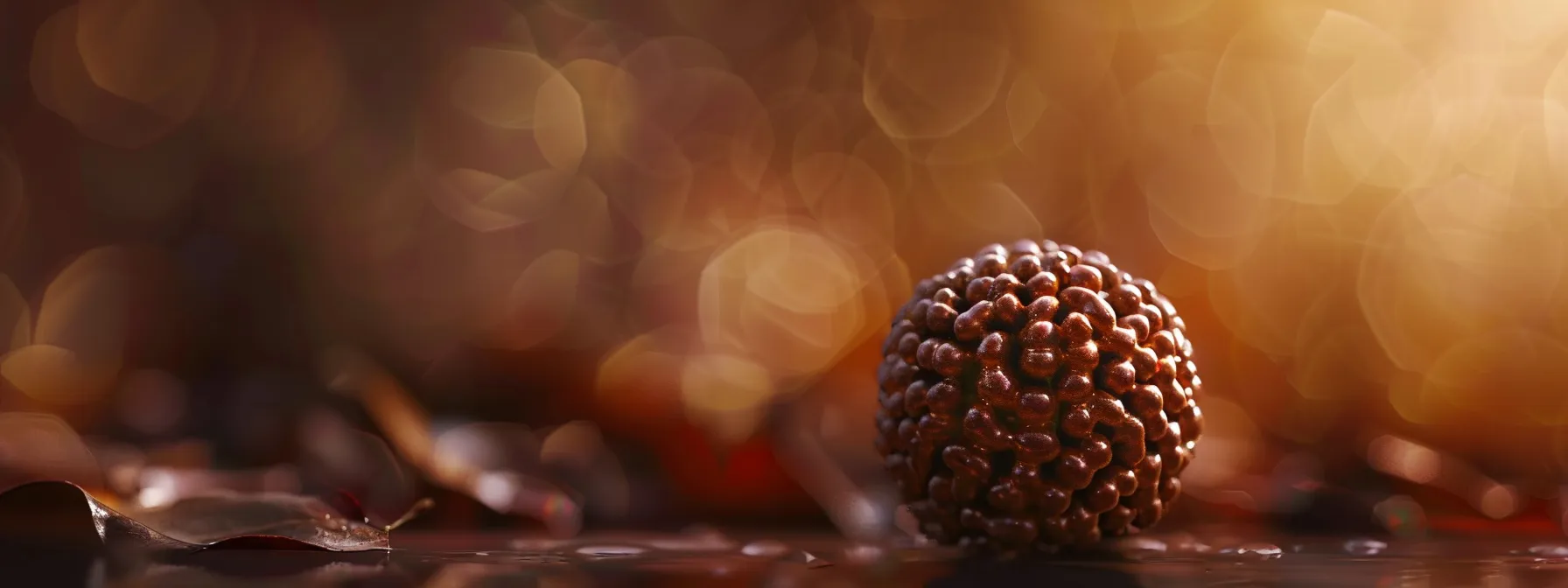
Guidelines for traditional wearers of Rudraksha emphasize the importance of understanding its significance in Shaivism, where these beads are symbols of divinity and wisdom. Methods of purifying and energizing elaeocarpus beads enhance their spiritual properties, while their influences on the mind, body, and spirit promote overall well-being. This section will explore these practices and their relevance in religious texts, providing practical insights for practitioners.
Guidelines for Traditional Wearers
For traditional wearers of Rudraksha, the first guideline is to understand its profound connection to spirituality and the vibrations it generates. It is believed that wearing Rudraksha can transform negative energy, often referred to as demons of the mind, into positive vibrations. This transformation is particularly beneficial for individuals seeking relief from stress, as it helps create a calming environment for meditation and prayer.
Wearing Rudraksha beads while visiting a Hindu temple can enhance the spiritual experience. The sacred atmosphere of the temple amplifies the beads’ positive vibrations, allowing devotees to connect more deeply with their practice. This connection fosters compassion and understanding, making the experience more enriching as practitioners reflect on their intentions and spiritual goals.
Moreover, the purification and energization of Rudraksha beads are vital practices that ensure their effectiveness. Traditional methods, often rooted in ancient texts, guide wearers on how to maintain the integrity of these sacred seeds. By following these guidelines, individuals can harness the full spiritual potential of Rudraksha, promoting well-being and diminishing the effects of stress in their daily lives.
Methods of Purifying and Energizing Beads
Purifying and energizing Rudraksha beads is essential for enhancing their spiritual properties. One effective method is to wash the beads in a mixture of water and milk, symbolizing the nurturing qualities that promote courage and strength in the wearer. After cleansing, the beads should be dried under sunlight, ensuring they absorb natural energy, which is believed to elevate their potency and effectiveness in rituals like japa.
Another technique involves the use of silver for adorning Rudraksha, which not only enhances aesthetics but also contributes to the purification process. Silver is thought to possess unique energetic qualities that resonate with positive vibrations, aligning with the beads’ spiritual essence. This combination fosters a deeper connection to deities like Kartikeya, promoting protection and guiding practitioners toward their spiritual goals.
Engaging in mantra chanting while handling Rudraksha beads further amplifies their energy. Practices rooted in traditional medicine suggest that reciting specific mantras optimizes the beads’ effectiveness in meditation and prayer. This approach assists individuals in focusing their intentions, allowing them to experience enhanced mental clarity and emotional stability as they integrate Rudraksha into their daily routines.
Influences on Mind, Body, and Spirit
The practice of wearing Rudraksha beads significantly influences the mind, body, and spirit, especially during meditation. Engaging with these sacred seeds enhances concentration and focus, which are essential elements for effective meditation. Many practitioners recognize that incorporating Rudraksha into their routines can aid in calming the mind, allowing for deeper introspection and connection to the spiritual aspects discussed in various puranas.
Furthermore, Rudraksha is deeply rooted in the myth surrounding Lord Shiva, often referred to as Rudra. This connection emphasizes the transformative power of these beads, as practitioners believe they can absorb and transform negative energies into positive vibrations. The influence of Rudraksha extends beyond individual practice; its usage across Southeast Asia signifies a broader cultural appreciation, underscoring its role in promoting holistic well-being in diverse communities.
On a spiritual level, wearing Rudraksha is said to facilitate a stronger connection to divine energies, promoting overall balance and harmony. Devotees often report heightened emotional stability and resilience when incorporating Rudraksha into their lives. This practice not only reflects a commitment to spiritual growth but also offers a tangible method for addressing personal challenges, enhancing one’s journey toward enlightenment and peace.
Rudraksha beads have long been a source of spiritual strength and personal connection. In modern Hindu society, their significance evolves, reflecting both tradition and contemporary beliefs.
Rudraksha‘s Place in Modern Hindu Society
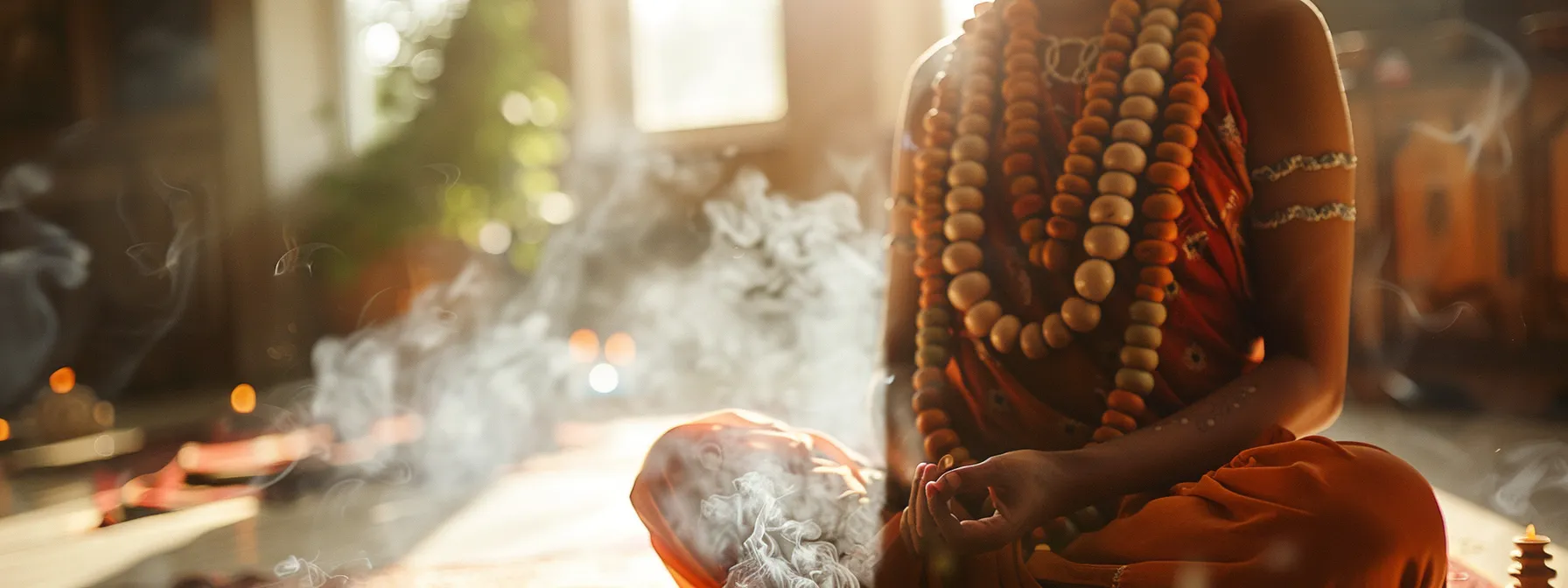
Rudraksha holds a significant place in modern Hindu society, integrating into contemporary spiritual practices while enhancing yoga and meditation experiences. Its relevance is rooted in texts like the Devi Bhagavata Purana, guiding practitioners in personal growth. As traditions evolve amidst modernity, the role of Rudraksha in ashrams and monasticism continues to preserve essential cultural practices, supporting the community’s spiritual journey and belief in reincarnation.
Integrating Into Contemporary Spiritual Practices
In contemporary spiritual practices, understanding the role of Rudraksha beads is essential for practitioners seeking a deeper connection to their traditions. These sacred seeds, often used during meditation, offer a tangible way for individuals to align with the divine energies of deities such as Devi. This integration encourages practitioners to embrace their cultural heritage while enhancing their personal spiritual journeys.
Rudraksha‘s significance in South India reflects its enduring role in rituals aimed at achieving moksha or liberation from the cycle of birth and death. Practitioners often incorporate these beads into their daily routines, which fosters a sense of peace and focus during spiritual practices. This alignment not only brings practitioners closer to their spiritual goals but also deepens their understanding of their cultural roots within Hinduism.
The evolving landscape of modern Hindu society continues to see Rudraksha beads being embraced in various spiritual contexts, from yoga practices to community ceremonies. This trend highlights the beads’ versatility and timeless relevance, allowing individuals to draw on traditional wisdom while engaging in contemporary spiritual expressions. By integrating Rudraksha into their lives, practitioners can cultivate mindfulness, strengthen their intentions, and enhance their connection to both community and spiritual traditions.
Enhancing Yoga and Meditation With Rudraksha
Rudraksha beads are increasingly embraced in modern yoga practices, serving as powerful tools to enhance meditation and spiritual connection. These sacred seeds facilitate a tranquil atmosphere, allowing practitioners to focus their intentions and deepen their connection to the universe. Incorporating a Rudraksha mala during yoga sessions helps individuals align their energy with the cosmic vibrations, promoting a sense of peace and clarity essential for effective practice.
When practitioners chant “Om Namah Shivaya” while handling Rudraksha beads, they invoke blessings from Hindu deities, creating a profound link to their spiritual heritage. This mantra, combined with the energy of the Rudraksha, can amplify the meditative experience, providing practitioners with a stronger grounding during their sessions. The calming properties of Rudraksha help individuals release stress and enhance their overall well-being, making it a valuable addition to any yoga practice.
Engaging in daily puja with Rudraksha beads further enriches the spiritual journey of modern practitioners. Rituals that incorporate these gemstones allow devotees to express devotion while cultivating inner balance and awareness. As they explore their spiritual paths, individuals find that using Rudraksha not only enhances their connection to the divine but also fosters a deeper understanding of their place within the greater context of Hindu culture and spirituality.
Preserving Traditions Amidst Modernity
In modern Hindu society, the practice of using Rudraksha beads serves as a method for preserving ancient traditions while adapting to contemporary life. Many individuals, while navigating the demands of urban existence, find comfort and balance through the spiritual energy associated with these sacred seeds. Rituals surrounding Rudraksha, such as puja or chanting, connect practitioners to the divine, fostering a sense of continuity with the spiritual heritage exemplified by revered sites like Mount Kailash.
The integration of Rudraksha into daily routines has become a bridge between age-old beliefs and modern spirituality. Practitioners often incorporate these beads in their meditation practices, channeling energies linked to deities like Durga and enhancing their emotional and spiritual well-being. This blend of tradition and modern life allows individuals to engage with their spiritual path, making the teachings of great sages, such as the Satguru, relevant in today’s context.
Furthermore, the cultural significance of Rudraksha is reinforced through communal practices that honor traditional values. During festivals and special ceremonies that involve the tandava dance or the symbolism of the lingam, the use of Rudraksha beads enriches the collective experience. This shared observance not only preserves traditions but also strengthens community bonds, enabling practitioners to explore their shared spiritual journey in a dynamic, supportive environment.
Rudraksha beads hold a special place in Hindu tradition, yet their impact reaches far beyond the confines of religion. As society evolves, their significance expands, offering valuable insights and connections in the modern world.
Extending Cultural Significance Beyond Religion
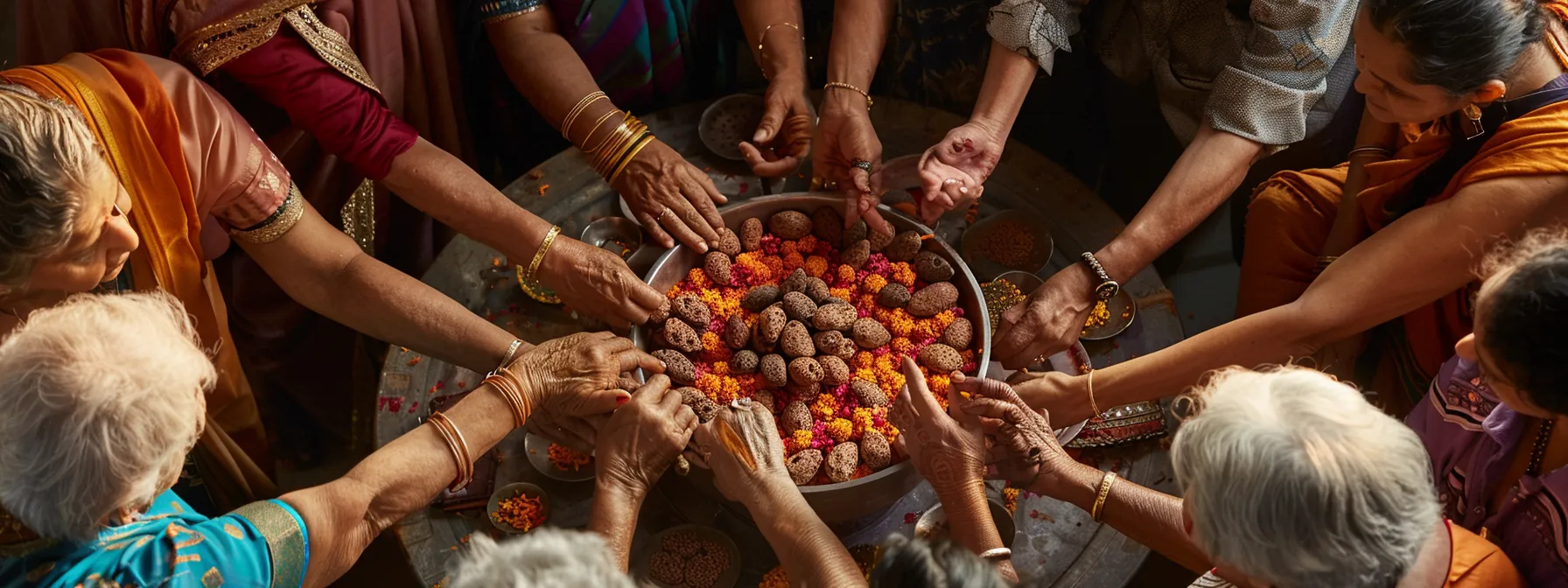
Rudraksha‘s significance transcends religious boundaries, finding a place in art, literature, and culture, thereby enriching human consciousness. Its global appeal fosters connections among diverse communities, including practitioners of tantra and Tibetan Buddhism. Additionally, promoting ethical sourcing and environmental stewardship ensures the sustainability of Rudraksha, allowing its benefits to be appreciated for generations. The following sections delve into these aspects, offering insights into the multifaceted role of Rudraksha.
Rudraksha in Art, Literature, and Culture
Rudraksha has transcended its religious connotations and found a place in art and literature, symbolizing devotion and emotional depth. Many cultural works reference Rudraksha underlining its importance in the Upanishads, where it represents the bond between human emotion and divine connection. This connection highlights how practitioners use Rudraksha as prayer beads or rosaries during spiritual practices, facilitating a deeper engagement with their faith.
The significance of Rudraksha also manifests during major Hindu festivals, like Maha Shivaratri, when art forms celebrate its spiritual essence. Various artistic expressions, including paintings and sculptures, depict deities adorned with Rudraksha jewelry, emphasizing its role in enhancing devotion and focus during prayer. Such representations serve as a reminder of the emotional journey individuals embark upon while using these sacred beads in their rituals.
Furthermore, literature encapsulates the cultural significance of Rudraksha, exploring its role in personal growth and meditation practices. Authors often describe the transformative effects of incorporating Rudraksha into daily life, noting how these prayer beads serve as tools for mindfulness and emotional balance. By engaging with the teachings of various texts, individuals can understand how Rudraksha enhances their spiritual path and overall well-being:
Global Appeal and Cross-Cultural Connections
Rudraksha beads have garnered global appeal, transcending their traditional roots in Hinduism. Many individuals in various cultures recognize their benefits, particularly in practices like Rudraksha Ratna Therapy and Chakra Therapy. These methods emphasize the healing properties of Rudraksha, allowing people from diverse backgrounds to incorporate them into their personal wellness routines.
The integration of Rudraksha into practices like Yoga and meditation has opened doors for cross-cultural connections. As more practitioners seek holistic approaches to well-being, organizations such as Future Imagine Innovations advocate for the therapeutic use of Rudraksha in daily life. This growing interest helps bridge cultural divides, fostering a shared understanding of the beads’ significance as tools for emotional and spiritual development.
Additionally, the adaptability of Rudraksha in various wellness and healing modalities reflects its widespread acceptance across different cultures. As individuals and practitioners explore the benefits of Rudraksha beads, they find ways to align these sacred seeds with their own personal growth journeys. This exchange of knowledge not only enhances individual practices but also reinforces the universal pursuit of peace, balance, and harmony.
Promoting Ethical Sourcing and Environmental Stewardship
Promoting ethical sourcing of Rudraksha beads is essential to ensure that the cultural and spiritual significance of these sacred seeds is upheld. Many practitioners advocate for sustainable harvesting practices that protect the trees and their ecosystems. By supporting businesses that prioritize ethical sourcing, consumers can contribute to the preservation of Rudraksha trees while still receiving the spiritual benefits that these beads provide.
Environmental stewardship plays a vital role in maintaining the health of the ecosystems where Rudraksha grows. Unsustainable practices can lead to deforestation and loss of biodiversity, impacting not only the Rudraksha trees but also the communities that rely on them. Educating consumers about the importance of sourcing Rudraksha responsibly can inspire them to choose vendors who are committed to environmentally friendly practices, fostering a sense of responsibility to the planet.
Practitioners and consumers can support initiatives that promote environmental health alongside the cultural significance of Rudraksha. For example, participating in reforestation projects can help restore habitats while also ensuring a sustainable supply of Rudraksha. By actively promoting ethical sourcing and environmental awareness, individuals can connect their spiritual practices with care for the planet, demonstrating a holistic approach to well-being:



